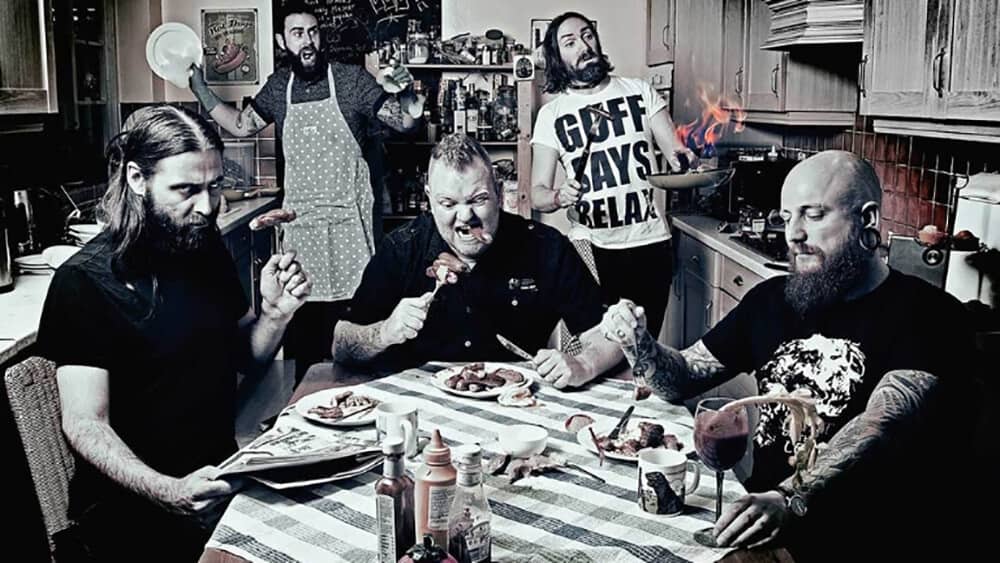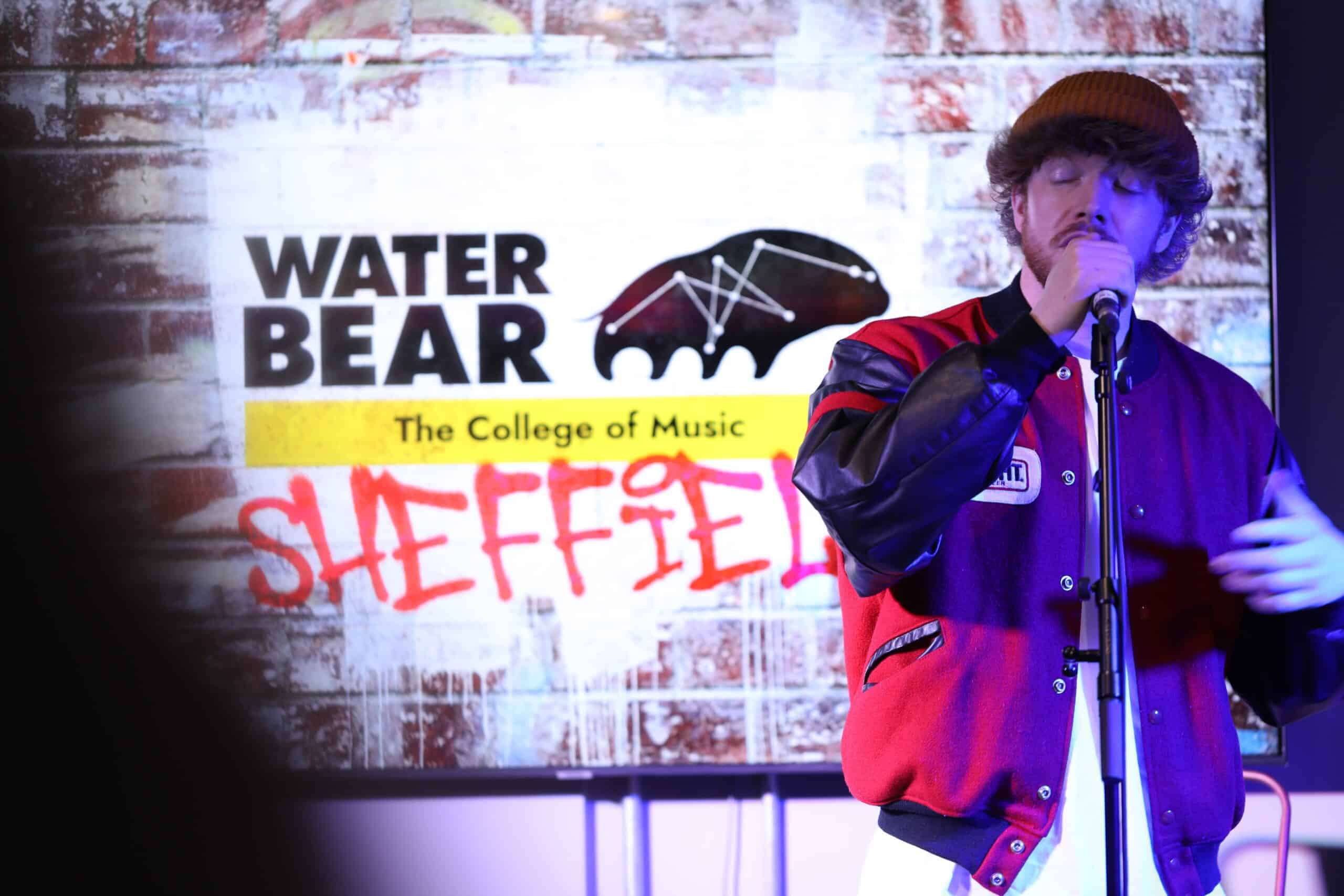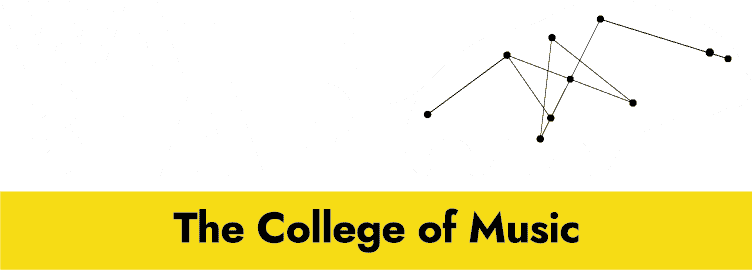JOIN US SEPTEMBER 2024 - APPLY TODAY OR BOOK YOUR PLACE ON ONE OF OUR OPEN DAYS IN BRIGHTON OR SHEFFIELD. UCAS CLEARING IS NOW OPEN.
JOIN US SEPTEMBER 2024 - APPLY TODAY OR BOOK YOUR PLACE ON ONE OF OUR OPEN DAYS IN BRIGHTON OR SHEFFIELD. UCAS CLEARING IS NOW OPEN.

If you collect clichés, “A picture is worth a thousand words” has gotta be one to stash in your scrapbook. In this era of social media, web presence and memes, that’s truer than ever. Who’s going to READ that thousand-word epic in this fast-browsing day and age? Press releases, interviews, write-up and reviews all help, but visuals matter too. A photo can have instant impact, strong visual stimulus to pull attention; also, to convey the image you want to project, your musicianship, your style of music and performance. Well-shot and edited photos, even more so. They’re important tools for selling your band.
In this instalment of the WaterBear advice blog, we’re going to be looking at photoshoots and photographers: how to approach them; how to make the most of them and optimise their effect and impact; what to do and what not to do; how to use photographs on your website, press packs; and so forth.
As ever, we’re talking to industry experts to get inside expertise and know-how that can help you find the right photographers, approach photoshoots like a pro, get good results and avoid rookie errors.
Ant May is a professional photographer who shoots for Planet Mosh.
Lisa Billingham is co-owner of Billibee Creative (with her husband, Rob). Lisa is also an internationally-published photographer for Midlands Metalheads, who also loves to interview when she doesn’t have two cameras in her hands!
Martyn Turner: a professional photographer, who photographs rock bands: anything from small pub gigs to major festivals, working for promoters, bands and venues.
Ivor Whitten from Metal Planet Music ('High-Voltage Photography) and Happy Metal Geek.
We’ll also be talking to Katie Frost, Photo Editor of The Moshville Times, to get inside information on how websites are looking for, and how they use, the photos that bands supply.
Photos can be used on your album covers, EPs and singles; on your own website and social media; a smart selection can go into your Electronic Press Packs (EPKs); they often get used by publications and online, to illustrate their stories, interviews, reviews and articles. These publications also need visually engaging images to attract and hold readers’ attention and keep them on your site.
An effective band photo has to do several things:
(1) It needs to show, and evoke, the personality and image of the group; also the band’s individual members.
(2) You'll need imaginative shots, well-composed images, interesting physical locations or composited backgrounds: these can all help make an eye-catching photo, as can action.
(3) Photos from live gigs can be particularly effective, giving an impression of the band’s musicianship, presence, performance skills and following. That can appeal to the public, to the fans and to potential bookers and venues, looking for a flavour of what they’ll be getting.
These days, the photo and video tech available to consumers is pretty impressive. Believe it or not, professional reporters have shot footage from war zones on iPhones then uploaded it to the studio for broadcast! However, just because your phone has umpteen megapixels, don’t underestimate the value of a skilled professional photographer, pro-level gear, and the skill to use it to best effect.
As we’ve touched on in previous blogs, you can do some work yourselves, or rely on friends, when you’re starting out and, on a budget, but as you grow and move forwards you’ll benefit from bringing professionals on-board. Don’t just assume that a mate with a camera is a good photographer, though. There’s more skill involved than some people assume! Point and click it isn’t!
You might find an amateur or aspiring pro to work with, e.g. by putting an ad on the noticeboard in a local camera shop, an art college or posting in groups online. Such photographers may be willing to work for experience and that old chestnut, exposure. It's good practice to offer to cover their expenses, though, and if they're working for exposure, make sure their work gets credited when published. More about this later!
Whether you're using an amateur or pro, do check out their portfolio! See the quality of their work and their range. Look for someone with experience in band shots: a generic commercial photographer or say a portrait or wedding photographer might not have the expertise and edge you need. Also: if you're using a pro, be prepared to pay the going rate!
Right! Over to our experts for some Q&A.
WB: So guys, what’s your advice to bands finding a photographer and approaching a photoshoot?
Ant: “When thinking about getting photos done, the most important thing is to plan ahead. A good photographer is likely to be busy, so short-notice shoots aren’t always possible. Plan ahead and book it early. “
Lisa agrees: “We would expect a band to have a good idea of what they want to achieve from a shoot. We are available to advise from the get-go, if required. Most bands know what they want; we help them achieve that.”
Katie: “Have an idea of what you want to convey when first speaking to a photographer so they know what you want to achieve as the end product. Be open to direction from the photographer & work together to create the perfect shoot to suit your needs.”
Lisa: “Bands need to make themselves stand out: look for something different that current bands are not doing
WB: So for bands, it's crucial to work out what you need beforehand. As ever, consider the end viewer/audience. Think about the image and impact you want to create. About the purpose and end use of the photos: straight promo shots or shots for an album cover? Do you want the photo to be posed or show on-stage action?
What sort of shots do you need? Headshots? Full-body? Landscape? Portrait? Think it through beforehand.
It's good idea for the band to meet the photographer so that the photographer can get a feeling for the band's image, music and expectations. This is a good opportunity to discuss the kind of shots that you want and where and how they'll be used. E.g. if the photos are intended for an album cover, space needs to be worked into the composition to allow for logos, text, track listings etc.
Planning, foresight and preparation are all vital then. Always good in this business!
WB: Moving on, when (from a tactical of view) is a good time to consider booking a photoshoot?
Ant: “Generally when you have a new album to promote and release, that’s a good time to have new photos for press releases etc.”
WB: Thanks! So how would you advise bands to prepare? Both for contact and discussion with the photographer, and later for the shoot itself? What creative input comes from the band and what from the photographer?
Ant: “Before approaching a photographer, you need to have a good idea of what you want - so if you know you want an outdoor shoot in a derelict setting, then tell the photographer that. Equally, if you want something in a studio with lots of editing done (e.g. to add a sci-fi background) then say so since that affects the workload for the photographer, and hence the price.”
Martyn: “Creative input I suppose is all down to me: to get a good shot I have to make the best of the situation. If they want something specific, they need to let me know. If they say what do you want us to do, it wont work if they’ve got something in mind.”
WB: We’ve mentioned this kind of forethought and need for communication before in the blog; also the importance of stepping back to consciously decide what image, feel etc. that publicity materials should create for the band and brand.
What other advice would you give?
Ant: “Agree the deliverables: what the photographer is expected to provide (e.g. how many finished photos of the band and/or individual members) and when they need to provide it. Be realistic - if you want lots of editing then that takes longer than shoots where only minimal editing is needed.
WB: What about on the day of the shoot?
Ant: “Turn up to the shoot on time! If the shoot is booked for a specific time and duration you need to be there on time or the shoot may be reduced in duration otherwise as it may not be possible able to end later.”
Lisa: “A lot of well-established bands believe that they should be photographed from one side only: their best side. Restrictions like these don't do anyone any good whether it is the band or the PR.”
WB: Do you have any advice about clothing and props?
Ant: “Think about what you’re going to wear for the shoot: a consistent look is better than all turning up in random outfits. Discuss this and any other ideas in advance with the photographer so both sides know the plan for the day and the desired outcomes.”
Katie agrees: “Personally I would say avoid wearing t-shirts featuring other band's logos.”
N.B. Clothes can be important for a photoshoot. First off, consider the band's image and the impression you're trying to create. Also, try to get them to match the location, situation and style of the shoot; or, sometimes, to create contract.
Taking a few changes of clothes is a good idea, including a couple of stage outfits and perhaps a more everyday/casual outfit. Having a change between light and dark coloured clothing can help.
Think of props too. That includes instruments, which in a shoot may be used as props rather than actually played. What's more, other props like motorbikes, vintage equipment, objects etc. can add a creative edge to a shot or shoot.
Also, you might find it helps to have a make-up artist at the shoot, and when close-ups are going to be shot. The photographer might well be able to suggest some that they work with.
WB: Have you any advice for how bands use the images afterwards?
Lisa: “When images are provided please do not crop off the photographer's logo and then post the image with no credit to the photographer. It has been given metadata for a reason so please respect that.
WB: What’s your advice to bands as regards using photographs in their EPKs (Electronic Press Packs)?
Lisa: “In relation to EPK, images it is useful to have up to 5 band images; any more is overkill. Make sure they are all different and if that means combining live gig images with location and studio then so be it. It’s not a case of trying to rip a band off with all the options, we are here to help!”
WB: Thanks! Now, let’s look at how those photographs can get used on the web and in third-party publications. Our industry expert here is Katie Frost, Photo Editor of The Moshville Times.
WB: How important are band photos to your website?
Katie: “We use band photos to accompany our ‘Band of the Day’ features, news pieces and sometimes album & live reviews (if artwork isn't supplied or we weren't able to get a photographer to a show).
“Band photos are useful to give readers an idea of what the band are about and what sort of music they produce. For example, a Viking metal band might be dressed in clothes with Viking influence, whereas a sleaze rock band would have a very different aesthetic. It helps paint a picture of what the band are all about.”
WB: So, from your perspective and experience, what makes a good band photo?
Katie: “A good photo is one that gives a sense of who the band are and what their music is about. Something with some character and individuality is more engaging with readers.
“From a photography point of view, a photo that is in focus and you can see each band member's face. It is also handy to have a photo that works well as a header image (in landscape) as well as for socials such as Instagram which often uses square images.”
What doesn't work?
Katie: “Something quite generic that doesn't give you any idea of what music the band play, also badly-framed or out-of-focus shots, or shots where members of the band have their face obscured by others. “
In conclusion:
Finally, here are some words of wisdom from Ivor Whitten from Metal Planet music and Happy Metal Geek , that sum up much of what we've talked about from several points of view:
“A photoshoot is an important part of any band’s toolkit in promoting style of music, aura of musicianship, and sellability. Any write-up – be it press release, interview, album review or gig review is a collection of words that can be interesting, noteworthy or newsworthy. But without pictures or, more importantly, photos of the band, you still just have a collection of words. In a book, words tell stories. Online it can be difficult to attract the reader’s eye to continue without some form of visual stimulus.
“Photographs are extremely important on both MetalPlanetMusic.com and HappyMetalGeek.com as they set out the visual stimulus to keep people interested and reading the main content. Websites want readers to stay as long as possible, and photos are part of the mix to keep the reader on the site. A good band photo has to show the personality of the group and the individuals that make up the band. It is an art form in its own right. Action or well-composed shots can really set off an eye-catching and interesting photo. A mixture of portrait and landscape photos keep the mix interesting and give websites a number of options. Live gig photographs can be exceptional in showing off the band being captured in the moment.
“Any band should check out the portfolio of any photographer they may be considering to take their photos. And be prepared to pay. A band may be lucky to have a good photographer as a friend but don’t rely on a friend who just happens to have a camera. Photos are used to help sell the band overall so a standout set of photos is a massive boost. Try to stay away from portrait shots that look like a school photo or family photo.
“Stay away from black and whites. Artistic they may be, but are only good when done right and at the right time for the right reasons. Colour, for websites, are far more eye-catching and capture the essence of the band in a more immediate way. Colour is easier than black and white. In the hands of a master, black and white photos are incredible and stripped back, just like a band that can masterfully still deliver an acoustic set. Once a band is happy with a photographer, listen to the photographer and take their directions. Discuss beforehand what theme you are going to go with and stick to it. A band can build up different themed sets. If a band is doing a live set, give the photographer a good bit of freedom and as long as they can to get ‘that’ photo.”
(1) Visual imagery has always been important in the music business; today, even more so.
(2) Think carefully about what you want to achieve from a photoshoot and where the photos are going to get used.
(3) Find a photographer you can afford, who has the skills you need, who you can work with effectively.
(4) Communicate clearly beforehand. Draw on the photographer's expertise, advice and aesthetic judgement. If you have particular ideas and expectations, make them clear.
(5) Treat the photoshoot itself professionally. Turn up on time. Treat the photographer and assistants, if any, with respect and consideration.
(6) Make good use of the photos. Give due credit to the photographer and/or editor, including credit, copyright and watermarking. Have the watermarking chat with the photographer before the shoot.
Huge thanks to world renowned Portrait and Rock n Roll Photographer Ami Barwell for giving us permission to use this photo, and thanks to the band RSJ too. The photo used is a great example of a creative photo shoot. We recommend you check out her work, along with all our contributors to this blog.
Ami Barwell www.musicphotographer.co.uk

- ‘Water bear’ is the common name for a Tardigrade.
- Tardigrades are micro creatures, found everywhere on earth.
- They are the most resilient creatures known.
- They can survive and adapt to their surroundings, even in outer space.
- Their resilience and ability to adapt and survive inspires us in everything we do. We love them.


WaterBear Education Ltd, Hanover House,
118 Queens Road, Brighton BN1 3XG, UK Map
Email: [email protected]
Tel: +44 (0) 1273 726230
WaterBear Sheffield, Unit 4, Gatecrasher,
49 Eyre Lane, Sheffield S1 4RB, UK
Email: [email protected]
Tel: +44 (0) 1143 992720

WaterBear Education Ltd, Hanover House,
118 Queens Road, Brighton BN1 3XG, UK Map
Email: [email protected]
Tel: +44 (0) 1273 726230
WaterBear Sheffield, Unit 4, Gatecrasher,
49 Eyre Lane, Sheffield S1 4RB, UK
Email: [email protected]
Tel: +44 (0) 1143 992720
- ‘Water bear’ is the common name for a Tardigrade.
- Tardigrades are micro creatures, found everywhere on earth.
- They are the most resilient creatures known.
- They can survive and adapt to their surroundings, even in outer space.
- Their resilience and ability to adapt and survive inspires us in everything we do. We love them.
